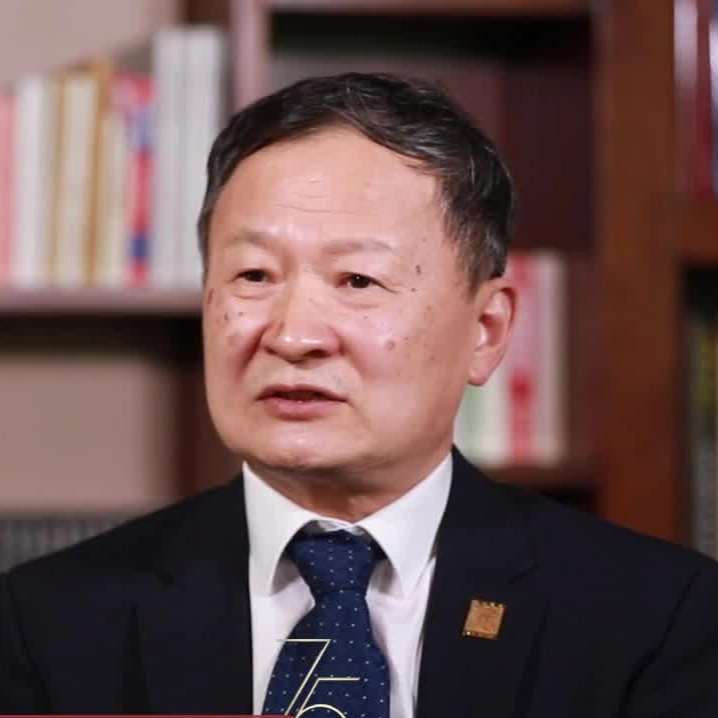China Is Making American Values Great Again in Space
On August 6th, China successfully launched the first 18 satellites into low-earth orbit as part of the Thousand Sails constellation (千帆星座), similar to the Starlink satellite network. The objective is to achieve worldwide cellular network coverage by 2027 using a network of 14,000 satellites. This satellite system in low Earth orbit carries significant commercial and national security implications for China. Furthermore, China’s advancements in space are fostering collective ownership of outer space by humanity and upholding the principles of the free market, a pursuit long championed by the United States.
 On the 6th, the Long March 6A carrier rocket was launched into space from the Taiyuan Satellite Launch Center.
On the 6th, the Long March 6A carrier rocket was launched into space from the Taiyuan Satellite Launch Center.
The importance of low Earth orbit satellites in terms of security is evident. For instance, in the context of the Russia-Ukraine conflict, the communication network facilitated by these satellites proved vital for the Ukrainian military’s operations. This system enabled real-time battlefield updates and remote strategies, surpassing the initial expectations of the global community. This scenario also acts as a cautionary tale for China. In the event of a military confrontation in the Taiwan Strait or the South China Sea, the United States would likely offer intelligence assistance to opposing forces, including alerts regarding potential landing maneuvers. This prompts a fundamental question: in contrast to the physical boundaries of land and sea, how should a nation delineate its sovereignty in outer space to prevent encroachment by other countries?
The current reality dictates that no nation can definitively establish boundaries in outer space; border in outer space only exists within effective control.
This situation echoed the historical progression of defining territorial waters. During the 1930 League of Nations Codification Conference, where 40 countries were involved, 33 distinct claims were put forth. Notably, Britain and the United States advocated for a 3-nautical-mile territorial sea boundary. How did China come to establish a 12-nautical-mile territorial sea boundary?
In the midst of the First Taiwan Strait Crisis in 1958, U.S. naval fleets frequently traversed the Taiwan Strait under the pretext of freedom of navigation. Despite Eisenhower’s nuclear threats, China reinforced its claim to a 12-nautical-mile territorial sea using coastal defence artillery with a range of 14 nautical miles. By 1967, China’s measurement garnered recognition from 66 nations worldwide.
While a few nations still maintain a territorial sea limit of 3 nautical miles, this measurement was initially derived from the reach of Dutch naval artillery. Actually, the United States, boasting the world’s largest navy after WWII, was the pioneer in challenging the 3-nautical-mile norm, expanding the idea of territorial waters to encompass the continental shelf in 1945. This historical shift underscores the notion that, when it comes to matters of sovereignty, the truth only exists within gun range.
Outer space presents its own unique challenges. Hungarian mathematician Theodore von Kármán first established that the altitude limit for human aircraft is 83.8 kilometres. Consequently, the International Aeronautical Federation generally uses 100 kilometres as the boundary between airspace and outer space. The 1967 Outer Space Treaty declares that outer space is the common heritage of humankind and cannot be claimed or owned by any single nation. However, this principle has not been effectively enforced in practice.
Chen Chang, Deputy Director of the Industrial Development Department at the Shanghai Academy of Spaceflight Technology, stated that low Earth orbit could accommodate up to approximately 60,000 satellites. Yet, SpaceX, an American company, plans to utilize over 40,000 of these slots for its Starlink project alone, representing a significant appropriation of shared resources by the United States.
Although these satellites are technically the property of commercial entities, the U.S. Department of Defense monitors space activities through its U.S. Space Command to ensure the safety of American satellites. Moreover, the U.S. Space Force’s Commercial Augmentation Space Reserve program allows the U.S. Space Force to use the capabilities of the commercial space sector through “pre-negotiated contractual agreements which would be activated in times of crisis or conflict,” according to the service’s “Commercial Space Strategy” document, which was released in April 2024.
By monopolizing these space resources, the U.S. could further challenge the sovereignty of other nations in this vast and largely invisible domain. Historically, to demoralize an enemy without direct infringement on its sovereignty, military forces might use loudspeakers at the border to broadcast surrender speeches. While these broadcasts are not weapons, they are intended as psychological attacks—raising the question of whether such actions can be seen as an infringement on sovereignty. As technology evolves, such ambiguous scenarios are likely to increase. These issues are not merely legal complexities; lacking effective control undermines one’s ability to protect legitimate interests. China’s current space exploration capabilities, comparable to those of the United States, actually reinforce the international order and support the principle that outer space should be shared by all humanity.
For instance, when only the United States possessed advanced lunar exploration capabilities, the issue of lunar mineral claims was not discussed. However, after China’s Chang’e lunar exploration program successfully collected samples from the far side of the moon, the U.S. promptly initiated discussions on this matter with China.
According to the United Nations Outer Space Treaty, lunar soil is considered the common heritage of humanity, and no nation can claim sovereignty over it. Consequently, China has opened an application channel for global scholars, allowing researchers from any country to request a portion of these samples for research. However, American researchers face obstacles due to the “Wolfe Amendment,” signed by former President Obama, which prohibits NASA and the White House Office of Science and Technology Policy (OSTP) from engaging in technical exchanges or collaborative scientific activities with China. The exclusive laws enacted by the U.S. when it held technological advantages have now excluded itself from resources meant for all humanity.
China could actually adopt a more constructive narrative to reassure the US. For instance, while sharing with the U.S. is feasible, such contributions should align with the free-market principles advocated by the U.S. China’s official and private space companies have invested significantly to retrieve lunar soil. Providing these samples to American research institutions for free could undermine orders for the American private space industry, contradicting the U.S. free market principles. Without investment, the U.S. government would benefit from Chinese efforts without contributing to them, potentially discouraging exploration. To demonstrate China’s respect for the ‘free market ’ values advocated by the United States, preserving the competitive dynamics of the U.S. private space sector, China should indeed not provide lunar soil samples to the U.S. at no cost.
In summary, China’s Thousand Sails constellation represents a new opportunity for humanity, not only in terms of global communications services but also in establishing a fair order for outer space utilization. By introducing more competitors into the low earth orbit, China enhances the likelihood that space resources will be shared for all, and the hope of peaceful development in space technology.




